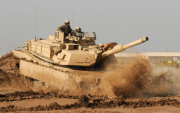|
MadDogMike posted:About the only logical suggestion I've ever heard for "secrets of the ninja" was the thought that certain groups might have brought over techniques from China/Korea (i.e. not normally seen in Japan) and that plus various guerilla tactics got lumped into "ninjutsu". Honestly I don't have much trouble accepting the idea of Japanese groups who specialized in sabotage and stealth having existed even if the whole shinobi/ninja thing is obviously blown WAY out of proportion into myth; even without the modern special forces proving the general idea has military value there's a long history of guerilla warfare and sabotage tactics being practiced everywhere I can think of, somebody codifying and specializing in them isn't that much of a stretch. Hell, the Nizari Fidai AKA the Assassins seem like a similar idea in another culture, albeit again one blown out of proportion into outright myths. Though I do wonder how that sort of thing went in Medieval Europe; they obviously had their own sneaky tricks and such which got used in conflicts but I can't recall any groups specializing in them unless someone wants to correct me. Maybe they were just considered part of regular tactics and taught to everyone? the difference between ninjas and assassins was that the assassins were real 'murdering your enemies' is an older tactic than homo sapiens
|
|
|
|

|
| # ? Jun 11, 2024 05:53 |
|
PeterCat posted:Couldn't the enemy bombers just bomb your airfields? The damages to runways are easily fixed, and destroying a significant portion of your enemy's airforce on the ground is quite hard to pull of. Israel destroyed most of its enemies' planes on airfields during the Six Days War, and the Axis managed to destroy quite many Soviet planes on the ground in Operation Barbarossa. I remember reading from some history books that Germany destroyed the Polish Airforce on airfields, but turns out that that was just Nazi propaganda that was believed in the West.
|
|
|
|
it's always cool to see the this kind of juxtaposition in tank museums
|
|
|
|
If you want to talk about orientalized myth making then the accusation that the order of assassins smoked hashish was a nonsensical smear made by their enemies as a half-pun on the name of their order
|
|
|
|
Has anyone had any success arming tanks with an extremely high-caliber short-barreled HE thrower and relying on sheer mass of explosive to disable enemy tanks?
|
|
|
|
The Lone Badger posted:Has anyone had any success arming tanks with an extremely high-caliber short-barreled HE thrower and relying on sheer mass of explosive to disable enemy tanks? That kind of vehicles were used against fortifications and later in the WWII in urban combat, not really against other tanks. ISU-152 and SU-152 had long barrels, but would otherwise fit your description.
|
|
|
|
Yeah, I mean throw enough HE at a tank and the concussion will gently caress up everyone inside (or just tear the hull apart, see expendable's blog). The problem is that it takes forever to reload and your muzzle velocity and therefore range is low, which are two of the main things you are looking for in a weapon to fight tanks with so you wouldn't really go there by choice.
|
|
|
|
Panzeh posted:Yeah, with patrols alone, it was actually very difficult to deal with raids from nimble bombers like SB-2s in the Spanish Civil War- they could be caught if they were hitting an obvious target where patrols could be set, but without that, it took a significant performance advantage to effectively intercept them if they could be caught at all. It's very enlightening reading RAF sortie reports from Battle of France and the Dunkirk evacuation, when fighters were operating 'old-skool' outside the Dowding System. Lots of flights returning with nil results and stuff like 'sighted formation of Heinkels est. 15 miles to port over Roeselare. Already at our 9 o'clock so let them go.' or 'encountered mixed German formation approx. 5000 feet above us. Applied full power and chased. Slowly closed distance but high engine temperatures meant had to abandon.' It's a litany of seeing German aircraft and being unable to intercept because the distance is too great, the bearing is wrong, the closing speed is too low, the altitude is too high, the engine is too hot or the fuel is too low. And you see what a benefit being able to be vectored to the target with 20 miles/15 minutes of advanced warning and real-time updates was in 1940. PeterCat posted:Couldn't the enemy bombers just bomb your airfields? As well as the difficulty of actually knocking out an airfield as already mentioned, it helps if you know which are the key airfields are to knock out. In the Battle of Britain the Luftwaffe relied on the extensive high-altitude photo reconnaissance they'd gathered in late 1939, but they never identified (and properly targeted) the crucial sector airfields and spent a lot of time trying to destroy an airfield which had been a fighter base in 1939 but was home to an army-cooperation squadron six months later. When Douhet wrote Command of the Air the RAF's only twin-engined bomber was the Vickers Vimy, carrying 2400lbs of bombs at 100mph for 900 miles. When Baldwin said 'the bomber will always get through' the RAF was still operating bombers which were in some ways worse than the Vimy like the Boulton-Paul Sidestrand (1050lbs, 140mph, 500 miles). The Hawker Hart light day bomber had just entered service (520lbs, 185mph, 430mi) which was so fast that the pilots were instructed to fly deliberately slowly in excersises so the Bulldog fighters could actually catch them, and the RAF then ordered the Hawker Demon, which was basically a Hart without the bombs and with a couple of extra guns. Two years later Boeing introduced the 247 airliner which did 200mph and could carry a 2000lbs payload. By then the RAF had the Hawker Fury which, flat out in level flight at its optimum altitude, could do...223mph. A year after that the Germans flew the He111 which did 260mph carrying 1500lbs of bombs. The Hawker Hurricane was still a year away from its first flight and the Gloster Gladiator (top speed 253mph...) had yet to enter service.
|
|
|
|
The Lone Badger posted:Has anyone had any success arming tanks with an extremely high-caliber short-barreled HE thrower and relying on sheer mass of explosive to disable enemy tanks? The SU-152/ISU-152 I guess, but even then those were gun-howitzers rather than plain howitzers. The problem with hitting a tank with a howitzer is that it's hard to do over a long range since the trajectory is so tall and the low muzzle velocity makes it harder to lead your shot.
|
|
|
|
The Lone Badger posted:Has anyone had any success arming tanks with an extremely high-caliber short-barreled HE thrower and relying on sheer mass of explosive to disable enemy tanks? tangentially related but the book I'm reading on the development of the IJN just got done covering Tsushima and apparently the Japanese shells hardly ever penetrated Russian belt armor because they packed the shells with lots of explosive at the expense of armor piercing capability, but it did blow up superstructure, set paint on fire, kill personnel with shrapnel, and basically just wrecked the people-spaces of the ships to disable them.
|
|
|
|
PeterCat posted:The other thing I thought of is why not just outfit your bombers with machine guns and cannon to shoot down the enemy bombers? Because of two main reasons Costs in terms of manpower, supply, and materials goes up drastically if you're trying for parity of bombers vs bombers "Armed" Bombers never worked, because they were typically heavier (and slower) than their "normal" counterparts. The XB-17, the Escort Me-323, and others were tried as concepts but were all proven to be inadequate. However, this is sometimes why the heavy fighter was still seen as a useful development. It was thought that the heavy armament on a Bf-110 would be enough, but true fighters were nimble and fast, and the Heavy Fighter died a death in the skies above France and Britain.
|
|
|
|
Alchenar posted:Lets just remember that we're also talking about the pre-spy satellite age. Unless you sent someone to fly over there recently with a camera you have absolutely no idea what's going on over the horizon of the frontline. This is also why you see an emphasis on "Time To XX,000 Feet" stats
|
|
|
|
Jobbo_Fett posted:Because of two main reasons Heavy fighters were used until the end of the war as night fighters.
|
|
|
|
The Lone Badger posted:Has anyone had any success arming tanks with an extremely high-caliber short-barreled HE thrower and relying on sheer mass of explosive to disable enemy tanks? If you count the Sturmtiger, yes. Also if you count the (I)SU-152 or any similar vehicle. If you rolled up on a Panzer III/IV, you wouldn't skip out on using a 122mm HE shot on them.
|
|
|
|
ChubbyChecker posted:Heavy fighters were used until the end of the war as night fighters. Yes, because they had nothing else that could carry a radar for such a purpose, until the very end when Me-262's, or F6Fs were capable of such operations.
|
|
|
|
How did you fight at night anyway? Wouldn't the enemy bomber be running without lights? If there's no moon or it's cloudy, do you even have a chance of finding your target well enough to hit them even with radar?
|
|
|
|
Solaris 2.0 posted:So I was looking at end-goals for Operation Barbarossa and apparently, German High Command didn't just consider taking Moscow to be the end of the campaign, but to advance to the AA line beyond Moscow. "We have to but kick in the door, and the whole rotten edifice will collapse." -  Just talking about the A-A line, I think this was identified as sufficient lebenstraum for the greater German Reich, and had all of the strategic resources [etc.] it would need. I think the assumption was that the state or states east of that line would not have the potential to challenge this new empire. As for reaching industry, you put a finger on a total failure in German strategic planning. Once the Nazis seized power, they secretly commissioned a strategic bomber project. The champion of this project, General Walter Weaver, actually called it the Ural bomber project, thinking specifically on attacking Soviet factories beyond the Urals. This program was cancelled for several reasons, a big part of it being Weaver was killed in an air crash in 1936. From then on, the entire focus was an overwhelming knockout blow to the USSR, so the issue of factories beyond the Urals was not considered.
|
|
|
|
VanSandman posted:How did you fight at night anyway? Wouldn't the enemy bomber be running without lights? If there's no moon or it's cloudy, do you even have a chance of finding your target well enough to hit them even with radar? You're asking a long post, there friend. Night bombing tactics and night fighter tactics constantly evolved through WW2, and the advance of technology played a crucial role. One more thing on the Battle of Britain: because the British had been attacked a lot by aircraft during the first World War, they had a leg up on Air Defense, as they understood it required a big, networked organization, and already had some experience organizing such a thing.
|
|
|
|
VanSandman posted:How did you fight at night anyway? Wouldn't the enemy bomber be running without lights? If there's no moon or it's cloudy, do you even have a chance of finding your target well enough to hit them even with radar? WWII night fighting tactics were some crazy poo poo. Before onboard radars were a thing the Luftwaffe tried to use run of the mill fighters, directing them with a combination of GCI and colored flares (lol) and then trying to light up the bombers with giant searchlights so the intercepting pilot could actually see what he was shooting at. Also they tried to deconflict flak and their own fighters operating in the same airspace. All of this went very poorly. Once they started flying night fighters with radar things got much better. They used basic GCI to get the night fighters in a position that their onboards could detect the bombers, then let the pilots do their thing. The Luftwaffe got murderously good at this very quickly, and the RAF responded with all sorts of clever and very modern things, like chaff and the first EW aircraft. The USN had its own thing going on in the Pacific, as they were quite tired of Betty bombers sliding in after dark and putting torpedoes into the sides of expensive ships. They started out by mounting a pretty decent radar set on a light bomber, then having a few fighters fly as kind of parasites for the bomber. They'd use GCI to get in the vicinity of the target, then the bomber detects it locally and vectors the fighters onto it. The fighters hope that they can spot the engine flames or have some moonlight to actually get the guns on the target. They called it BAT TEAM. It is mainly remembered as the way Butch O'Hare died. Eventually radars got small enough they were able to just put them on Hellcats, which seems less fun.
|
|
|
|
VanSandman posted:Wouldn't the enemy bomber be running without lights? Just don't let the FAA hear about your doing that!
|
|
|
|
bewbies posted:They called it BAT TEAM. God what a perfect name.
|
|
|
|
The craziest early WW2 co-ordination to me is trying to run a tank platoon, let alone a larger unit, without onboard radios in every tank. What do you even do when buttoned up besides try your best to play "follow the leader"? I mean, early french and soviet results seem to show the answer is "lose the battle" but even still
|
|
|
|
Edgar Allen Ho posted:The craziest early WW2 co-ordination to me is trying to run a tank platoon, let alone a larger unit, without onboard radios in every tank. What do you even do when buttoned up besides try your best to play "follow the leader"? You look for a flag coming out of your platoon leader's tank
|
|
|
|
Edgar Allen Ho posted:What do you even do when buttoned up besides try your best to play "follow the leader"? Armored units still practice using flags, hand-and-arm signals, etc. even today. It's not ideal, but it's possible to generally get your AFVs where you want them to be with these methods.
|
|
|
|
Hmm, on a tactical level it doesn't seem like it was a fatal problem (certainly a disadvantage). Tanks not having individual radios had nothing to do with the lethargy of French strategic/operational command and there were some pitched battles where they actually got into the fight. You had your briefing at the start of the day and you aligned with what everyone else was doing.
|
|
|
bewbies posted:WWII night fighting tactics were some crazy poo poo. Before onboard radars were a thing the Luftwaffe tried to use run of the mill fighters, directing them with a combination of GCI and colored flares (lol) and then trying to light up the bombers with giant searchlights so the intercepting pilot could actually see what he was shooting at. Also they tried to deconflict flak and their own fighters operating in the same airspace. All of this went very poorly. Before radars were a thing people also had to listen after planes: 
|
|
|
|
|
VanSandman posted:How did you fight at night anyway? Wouldn't the enemy bomber be running without lights? If there's no moon or it's cloudy, do you even have a chance of finding your target well enough to hit them even with radar? lots of carrots.
|
|
|
|
Just on an extremely picky point of terminology:BalloonFish posted:sighted formation of Heinkels est. 15 miles to port over Roeselare Out of interest, were they actually calling it "Roeselare"? Only in the last war, the British forces used the French names for everything that had one, even in Flanders, and so it was always "Roulers". Trin Tragula fucked around with this message at 20:40 on Nov 30, 2020 |
|
|
|
Trin Tragula posted:Just on an extremely picky point of terminology: ah, if we're doing this gradenko_2000 posted:tangentially related but the book I'm reading on the development of the IJN just got done covering Tsushima and apparently the Japanese shells hardly ever penetrated Russian belt armor because they packed the shells with lots of explosive at the expense of armor piercing capability, but it did blow up superstructure, set paint on fire, kill personnel with shrapnel, and basically just wrecked the people-spaces of the ships to disable them.
|
|
|
|
Trin Tragula posted:Just on an extremely picky point of terminology: Haha! Almost certainly not - I wasn't quoting verbatim, just paraphrasing from what I could remember. I just picked a Flemish place I knew was a bit inland and southeast of Dunkirk!
|
|
|
|
WW2 Data As we finish up the smoke grenades with today's update, we also delve into the world of German Rifle Grenades. What other color of smoke signals does the Handrauchzeichen resemble? What is inside a Lachrymatory grenade? What can you normally find on the stem of a rifle grenade? What color is the cap on a blank 7.92mm cartridge? All that and more at the blog!
|
|
|
|
Alchenar posted:Hmm, on a tactical level it doesn't seem like it was a fatal problem (certainly a disadvantage). Without radios any tactics beyond "get on line" or "go that way" are practically impossible. On a platoon level you can do something like a basic road march, then go column-to-line, with flags and hand signals - but that's about it. Anything even vaguely tricky like "some stay here, some try to turn a flank" isn't really possible without some form of radio communication.
|
|
|
|
Edgar Allen Ho posted:The craziest early WW2 co-ordination to me is trying to run a tank platoon, let alone a larger unit, without onboard radios in every tank. What do you even do when buttoned up besides try your best to play "follow the leader"? Hand/flag signals, flares or tracers for anything more complicated than that.
|
|
|
|
Cessna posted:Without radios any tactics beyond "get on line" or "go that way" are practically impossible. Messenger pigeons!
|
|
|
|
Cessna posted:Without radios any tactics beyond "get on line" or "go that way" are practically impossible. Itís been 13 years since I was in FDF but Iím still able to call a section to simultaneously engage two targets crossing fires with hand and arm signals. Requires close enough visual distance though. Also a funny anecdote about a tank that drove into a minefield and misunderstood a rarely used signal, interpreting it as ďpivot in placeĒ and grinding 2 dummy mines into very fine powder
|
|
|
|
Valtonen posted:Itís been 13 years since I was in FDF but Iím still able to call a section to simultaneously engage two targets crossing fires with hand and arm signals. Requires close enough visual distance though. Yeah, but everything has to line up perfectly. And French tanks had the TC also working as the Gunner and Loader at the same time.
|
|
|
|
ChubbyChecker posted:ah, if we're doing this as much shrapnel as they can fit in the clip, duh.
|
|
|
|
Cessna posted:And French tanks had the TC also working as the Gunner and Loader at the same time. Even though I already know it, it's always weird to consider how many more dudes were actually crewing the german armoured force in 1940. Like at Hannut and Gembloux Gap, where the french tanks performed well enough against their direct german counterparts, the germans were rolling around with modern-style 4- and 5-man medium tanks while the S35 only had 3. And the obsolete Hotchkiss tanks had 2 to the PzII's 3. I've never crewed a tank but adding two extra bodies has got to be a huge edge when the vehicles' tactical capabilities are so similar. And then the commander has no cupola either. Edgar Allen Ho fucked around with this message at 22:39 on Nov 30, 2020 |
|
|
|
Cessna posted:Yeah, but everything has to line up perfectly. This wasn't a unique weakness of the French, the Germans had one-man turrets in production until 1942. I don't think the British had one-man turrets past the Infantry Tank Mk.I. As for the USSR, one of the biggest complaints about the T-70 was that the commander had to load after every shot, whereas on the T-60 the autocannon at least let him observe the battlefield or fire for a bit without moving away from his optics. Edgar Allen Ho posted:Even though I already know it, it's always weird to consider how many more dudes were actually crewing the german armoured force in 1940. Like at Hannut and Gembloux Gap, where the french tanks performed well enough against their direct german counterparts, the germans were rolling around with modern-style 4- and 5-man medium tanks while the S35 only had 3. And the obsolete Hotchkiss tanks had 2 to the PzII's 3. I've never crewed a tank but adding two extra bodies has got to be a huge edge when the vehicles' tactical capabilities are so similar. And then the commander has no cupola either. The Pz.Kpfw.II had the same layout as some French tanks: one guy in the turret, two in the hull (driver and radio operator).
|
|
|
|

|
| # ? Jun 11, 2024 05:53 |
|
Cessna posted:Without radios any tactics beyond "get on line" or "go that way" are practically impossible. Yes it's a huge disadvantage, but it's important not to assume that disadvantage has a correlation with how events played out (as the OP implied). If French tanks in 1940 had 5 person crews and a tactical radio net it probably doesn't change anything fundamental in how the Battle of France goes. The French expected to fight their tanks in the form of 'okay guys today we're attacking this enemy position, this is the marching route, this is the jump off point, this is route of advance and halt point. If the infantry all start running then shift into reverse gear. See you all this afternoon'.
|
|
|





























